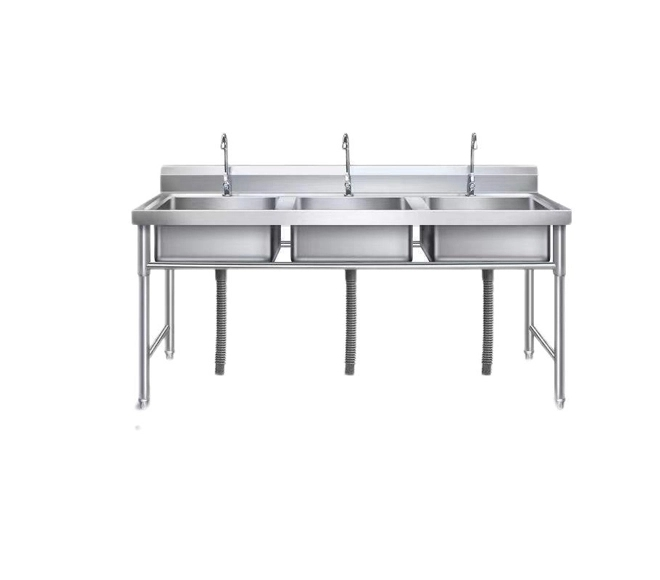How Long Do Stainless Steel Sinks Last? — Lifecycle Analysis for Commercial and Residential Applications
Understanding the expected lifespan of stainless steel sinks is essential for commercial kitchens, hotels, and upscale residential projects. Longevity directly impacts maintenance costs, operational efficiency, and overall return on investment. This article explains what influences the durability of stainless steel sinks and outlines how to maximize their service life. Expected Lifespan | Material Grade Impact | Role of Thickness | Importance of Surface Treatment | Conclusion
Expected Lifespan of Stainless Steel Sinks
High-quality stainless steel sinks can last 20–30 years or even longer, depending on usage conditions and maintenance practices. In commercial kitchens with heavy daily use, a premium sink can maintain performance and appearance for over two decades. For residential applications, where usage intensity is lower, the lifespan often exceeds 30 years.
The key to achieving these service durations lies in material quality, structural design, and surface treatment. Investing in a sink designed for demanding environments ensures reduced replacement costs and higher operational stability over time.

حوض من الفولاذ المقاوم للصدأ التجاري حسب الطلب
Impact of Material Grade on Longevity
The material grade significantly affects sink lifespan. SUS 304 stainless steel, containing 18% chromium and 8% nickel, provides excellent corrosion resistance and mechanical strength, making it the preferred choice for most commercial and residential sinks. In contrast, lower-grade options such as SUS 201 may corrode more quickly, especially in humid or coastal environments, reducing their usable life.
Premium حوض من الفولاذ المقاوم للصدأ مخصص models from madesink.com, including TGR-FS3021 and TGR-DR3219, use SUS 304 to ensure prolonged durability and consistent performance under high workloads.
Role of Thickness in Extending Service Life
Sink thickness directly contributes to impact resistance and structural integrity. Thicker sinks, such as those with 3+1.2 mm multi-layer construction, resist denting and vibration-related fatigue better than thin-gauge alternatives. This is particularly important in busy commercial kitchens, where heavy cookware and repetitive impacts are common.
Choosing a thicker sink not only extends the lifecycle but also enhances user experience by providing a more stable and quieter working environment.
Importance of Surface Treatment and Finishing
Advanced surface treatments, such as brushed, matte black, or nano coatings, improve scratch resistance and simplify maintenance. For example, the WWF8046 Black waterfall sink features a nano-coated surface that protects against fingerprints and minor abrasions, maintaining a new appearance for a longer period.
Well-executed finishes prevent localized corrosion and ensure that sinks retain their aesthetic and hygienic qualities throughout their lifespan.
Conclusion: Maximize Value Through Quality and Maintenance
Stainless steel sinks can last over 30 years when constructed from high-grade materials like SUS 304, combined with sufficient thickness and advanced surface treatments. Investing in premium sinks reduces long-term costs and ensures dependable performance in demanding commercial or residential environments.
Explore our full range of أحواض تجارية مخصصة and Custom Sink Accessories to find durable solutions designed to meet your project’s exact needs.







